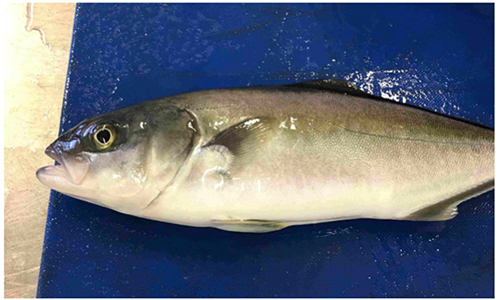Innovative nanobubble technology used in diverse production industries globally, is being evaluated for its potential to help Australian aquaculture oxygenate water.
In many recirculating aquaculture systems (RAS) maintaining the optimal dissolved oxygen levels in water is an ongoing challenge. Getting it right will result in fast-growing, healthy and productive fish.
Too little oxygen results in slower fish growth, reduced resilience to disease and potentially, death from hypoxia – a lack of oxygen. Paradoxically, when oxygen levels are too high it can also reduce fish health and productivity, leading to the potentially fatal gas bubble disease.
FRDC Program Manager Toby Piddocke says while diffuser technology commonly used to aerate water is becoming increasingly efficient, in most systems, oxygen quickly disperses from the water into the atmosphere with 6 per cent or less available for fish.
However, new nanobubble technology offers the potential to improve oxygenation rates, reducing production costs and improving the profitability of aquaculture operations.
Production efficiencies
“A preliminary pilot trial has resulted in some encouraging results,” says Toby. “So to help the Australian industry determine whether it could be considered for broader adoption, we are funding an investigation into the production efficiencies it might offer, and the effects of nanobubble oxygenation on fish growth and health.”
Australian-based company Nano Bubble Technologies has patented its Nano Bubble Injector which puts microscopic gas bubbles into the water column. Its technology is being used to add oxygen to water in turf production, hydroponics and agriculture, and with ozone to sanitise water. Internationally nanobubble technology is used in wastewater treatment, biomedical engineering, aquaculture, the gas and oil industry and the food industry.
“We are investigating whether it provides a more efficient way to get the oxygen into the water for tank-based aquaculture, and other fish holding systems,” says Toby. “What we're really interested in, is whether this can reduce costs and improve production efficiencies while maintaining fish growth.”
Yellowtail Kingfish (Seriola lalandi), and barramundi (Lates calcarifer) are the test species for the nanobubble evaluations, which are being conducted at the Port Stephens Fisheries Institute in NSW.

Yellowtail Kingfish harvested from nanobubble oxygenated water after six weeks weighing in at around 250 grams, with clear eyes, fins and skin. Photo: NSW DPI.
“Yellowtail Kingfish is a high energy demand species – so high oxygen demand,” explains Toby. “If it does well in a nanobubble system, then we’d expect many other species to do well too.”
Trials at Port Stephens
Fisheries scientists from NSW Department of Primary Industries are conducting three experiments, which will compare water oxygenation and fish growth rates using the nanobubble technology and a conventional diffuser.
The first experiment has been completed, comparing the growth of 52-gram juvenile Yellowtail Kingfish over six weeks, stocked at low density (10 fish per tank) and high density (50 fish per tank).
Fish performed equally in both systems, with good growth in the low-density tanks and slower growth in the high-density tanks which was attributed to crowding.
A further two experiments will be completed in May testing aeration systems and fish performance in different water salinities and at different temperatures. A cost-benefit analysis will also be produced comparing oxygen gas use and other efficiencies that might result from the nanobubble technology. This project is expected to be finalised in June 2023.
Related Project
2019-139: Evaluation of nanobubble technology in aquaculture
This relates to R&D Plan Outcomes 1, 2 and 4





